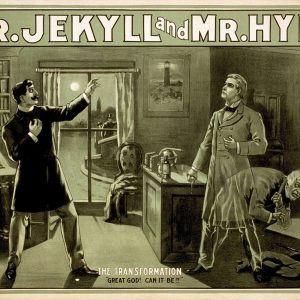Want to experience the greatest in board studying? Check out our interactive question bank podcast- the FIRST of its kind here: emrapidbombs.supercast.com
Author: Blake Briggs, MD
Peer Reviewer: Travis Smith, DO
Introduction
A migraine headache is an episodic disorder marked by severe headaches. It is a very common pathology and a common cause of headaches presenting to the ED. The pathophysiology is still incompletely understood and not tested on, yet the treatment of migraine headaches, along with safely ruling out more dangerous causes of headaches, is critical to every EM physician.
Migraines affect up to 12% of the US population, with women being more frequently affected than men.1 There are many varieties of migraine headaches. The most common presentation is a migraine without aura.2
Unfortunately, the word “migraine” has come to mean “bad headache”, especially in laypeople. It is critical to always ask patients what they mean by the word “migraine”. We always follow up by asking “did a medical professional tell you that you have migraine headaches, or are you calling this a migraine headache because it is very painful?” If you forget about the criteria for a migraine, just remember to look up the IHS classification.
Migraines are recurrent and chronic in millions of people. In nearly 75% of all migraines, attacks are triggered for endless reasons, including menstruation, visual stimuli, weather changes, alcohol, sexual intercourse, and psychological stress are often reported triggers.3 Please don’t ask the patient if it is the worst headache of their life, as this question is not associated with an increased likelihood ratio of assisting in the diagnosis.
Clinical features
Prodrome: these occur in ~75% of migraineurs, consisting of a variety of vague symptoms such as yawning, depression, anxiety, neck stiffness, irritability, olfactory or gustatory stimulation, and even changes in bowel movements.4
Accelerate your learning with our EM Question Bank Podcast
- Rapid learning
- Interactive questions and answers
- new episodes every week
- Become a valuable supporter
Aura: only about 25% of patients will have an aura, and often a headache accompanies it.5
Classically, auras are gradual in onset, last no longer than a few hours, and may be a mix of positive and negative symptoms. Importantly, these symptoms are distinguished by complete reversibility.
Here’s some more details on these:
Visual: bright spot or focal visual loss, gradually expanding to involve a quadrant or hemifield of vision (scotomata). Zigzagging lines often appear as well.
Sensory: Tingling in one limb or on one side of face. Its associated numbness may last up to a few hours but rarely longer.
Language: uncommon. Marked by wording difficulties that can include dysphasia.
Motor: most rare. One limb or greater, or facial weakness. This is called a hemiplegic migraine.
An important point is that these auras can occur in sequence but should not occur simultaneously. If they do, this might raise concern for more concerning intracranial processes.
Headache: classically unilateral, throbbing, or pulsatile quality. Intensity gradually increases over a few hours. Nausea/vomiting are common, along with photophobia or phonophobia.
Many attacks resolve with sleep. Episodes may last for a few hours and if several days.
Sadly, none of the above symptoms are wholly unique to migraine pathology. You still must consider sinister headache causes.
Migraine subtypes
Migraine is the great mimicker of neuro-complaints, and there are multiple types that might be encountered. It behooves the clinician to rule out other, more dangerous causes of headache before assuming migraine etiology. We will not cover all the subtypes, just classic ones.6
Retinal migraine: a specific subtype where there is scotomata or blindness occurring for up to one hour. You must distinguish this from amaurosis fugax.
Vestibular migraine: please see our vertigo handout for more details on vertigo workup and differential diagnoses.
Hemiplegic migraine: motor weakness in limb or face.
Migraine with brainstem aura: rare. Brainstem symptoms (dysarthria, vertigo, diplopia, ataxia, change in consciousness).
Diagnosis
It is up to us to rule out the bad causes of headaches. We do this by asking and searching for red flag symptoms. It is also important to note that most patients who present with a headache do not need any labs or imaging.7 Your diagnosis should be simply based on a compatible history, exam, and eliminating other potential diagnoses. Clinical features that favor migraine over tension headache include nausea, photophobia, phonophobia, and worsening of headache with physical activity.
There are diagnostic criteria and you do not need to know them. It is not the EM physician’s role to definitively diagnose migraines. We feel that should be left up to a neurologist or patient’s PCP whom they routinely follow up with.
In fact, our job is to rule out other, more severe causes of headache. The bad causes of headaches to think about include SAH, meningitis, vertebral artery dissection, carbon monoxide poisoning, acute glaucoma, a brain mass or space-occupying lesion, and temporal arteritis.
When to perform neuroimaging?8
There are no strict criteria to help with this, but certainly some clinical features stand out when one should strongly consider imaging.
– First-time presentation or a headache that is worse than normal for the patient (i.e. “first”).
– Any significant change in pattern, frequency, or severity of headaches (e.g. sudden onset)
– New complex symptoms or auras that the patient has not previously had
– Multiple auras occurring at once
– Auras or headaches that do not immediately resolve and are persistent, especially after treatment
– New onset headache in an immunocompromised patient
– Any altered mental status
CT head without contrast is a superb, first line test in these patients. Some patients might need a CTA if concern for cranial artery dissection. See our separate handout on that topic for more details here.
Labs are not helpful, and we do not routinely recommend them.
Treatment
Abortive therapy ranges from simple analgesics to antiemetic medications. The earlier these are given, the more effective they are. Single larger doses are better than small repetitive doses. Oral agents in general are the least effective.
Mild to moderate attacks: The key here is no nausea or vomiting. These patients respond well to acetaminophen and ibuprofen, naproxen, or diclofenac. All at standard doses; acetaminophen should be given at 1000 mg. There are no studies comparing the relative efficacy of NSAIDs. They are tried first because they can be given orally, are less expensive overall and less hassle to give.9
Moderate to severe attacks: antiemetic dopamine receptor blockers are the mainstay for treatment. These include prochlorperazine 10 mg IV/IM or metoclopramide 10 mg IV/IM. Don’t waste your time giving these PO, they don’t work as well.
Prochlorperazine: as effective or more effective than Metoclopramide or sumatriptan, much more effective than opioids.10,11,12
Metoclopramide is as good as sumatriptan.13
Other dopamine agents that might be as good or better? Droperidol.
Droperidol was studied in 300 patients in an RCT, found to be better than placebo, but higher rates of akathisia. However, high doses were used (like >3 mg, some even got 8 mg!). A standard, effective dose is 2.5 mg. 2 systematic reviews found droperidol was as effective or better than prochlorperazine.14,15
Haloperidol was not as studied and in small studies performed no better than metoclopramide. It had higher rates of akathisia and sedation.16
Diphenhydramine: commonly given. Usually oral or IV (12.5 or 25 mg). It is a dogmatic belief that it reduces the risk of akathisia, but it is unknown how true this is. It does not reduce the headache, as shown in multiple RCTs. You can give an oral dose and discharge them, but we’ve found as long as you ask the nurse to very slowly push the antiemetic agent, the risk of akathisia is very low.
Ketorolac: a low-cost alternative addition in those with no contraindications to NSAIDs. We give 15 mg per dose. It is usually given with antiemetics.
Dexamethasone: does not immediately reduce the headache but reduces the rate of early headache recurrence. Supporting evidence comes from meta-analysis of 7 RCTs in the ED and headache clinics. 738 patients, those who got dexamethasone had a reduced rate of headache recurrence at 24-72 hours. No major adverse effects were identified.17
Caution in those at risk for steroid toxicity or have recently been on steroids. You should only be giving this drug to those with a confirmed history of migraine headaches.
IV fluids: there is no evidence that fluids help, but no harm they do either.18 If we are trying to have the patient discharged quickly, we do not wait for IV fluids.
What about triptans?
Sumatriptan SQ or nasal spray is given but be careful! The contraindications to these medications are serious, along with their side effects, reported in up to 15% of patients.19 There is debate on how much triptans increase the risk of stroke, but this shouldn’t really come up in discussion due to the availability and success of antiemetic drugs. Triptans should never be used in any patients with any ischemic disease (CAD, coronary vasospasm, CVA/TIAs, hemiplegic migraines, peripheral vascular disease, uncontrolled HTN, any recent use of a serotonergic agent in the last 24 hours, MAOI in the last 2 weeks, or any arrhythmia with an accessory conduction pathway. Wow, talk about a lot of contraindications- obvious why we don’t like to give these.
Lastly, never give these for headaches: opioids (no pain relief) or ondansetron (poorly studied but has been associated with a high incidence of headache as a side effect).
Critical pearl: if a “migraine” headache is treated successfully, this is not considered diagnostic of migraine, as other primary headaches and secondary headaches may also improve with treatment.
References
1. Lipton RB, Stewart WF, Diamond S, et al. Prevalence and burden of migraine in the United States: data from the American Migraine Study II. Headache 2001; 41:646.
2. Stewart WF, Shechter A, Rasmussen BK. Migraine prevalence. A review of population-based studies. Neurology 1994; 44:S17.
3. Kelman L. The triggers or precipitants of the acute migraine attack. Cephalalgia 2007; 27:394.
4. Kelman L. The premonitory symptoms (prodrome): a tertiary care study of 893 migraineurs. Headache 2004; 44:865.
5. Hansen JM, Lipton RB, Dodick DW, et al. Migraine headache is present in the aura phase: a prospective study. Neurology 2012; 79:2044.
6. Headache Classification Committee of the International Headache Society (IHS) The International Classification of Headache Disorders, 3rd edition. Cephalalgia 2018; 38:1.
7. Silberstein SD. Practice parameter: evidence-based guidelines for migraine headache (an evidence-based review): report of the Quality Standards Subcommittee of the American Academy of Neurology. Neurology 2000; 55:754.
8. Evans RW. Diagnostic testing for migraine and other primary headaches. Neurol Clin 2009; 27:393.
9. Becker WJ. Acute Migraine Treatment in Adults. Headache 2015; 55:778.
10. BET 1: Metoclopramide or prochlorperazine for headache in acute migraine? Emerg Med J 2013; 30:595.
11. Friedman BW, Irizarry E, Solorzano C, et al. Randomized study of IV prochlorperazine plus diphenhydramine vs IV hydromorphone for migraine. Neurology 2017; 89:2075.
12. Kostic MA, Gutierrez FJ, Rieg TS, et al. A prospective, randomized trial of intravenous prochlorperazine versus subcutaneous sumatriptan in acute migraine therapy in the emergency department. Ann Emerg Med 2010; 56:1.
13. Colman I, Brown MD, Innes GD, et al. Parenteral metoclopramide for acute migraine: meta-analysis of randomised controlled trials. BMJ 2004; 329:1369.
14. Kelley NE, Tepper DE. Rescue therapy for acute migraine, part 2: neuroleptics, antihistamines, and others. Headache 2012; 52:292.
15. Acute migraine treatment in emergency settings. Comparative Effectiveness Review Summary Guides for Clinicians. Agency for Healthcare Research and Quality. www.ncbi.nlm.nih.gov/books/NBK164542/ (Accessed on November 25, 2013).
16. Honkaniemi J, Liimatainen S, Rainesalo S, Sulavuori S. Haloperidol in the acute treatment of migraine: a randomized, double-blind, placebo-controlled study. Headache 2006; 46:781.
17. Colman I, Friedman BW, Brown MD, et al. Parenteral dexamethasone for acute severe migraine headache: meta-analysis of randomised controlled trials for preventing recurrence. BMJ 2008; 336:1359.
18. Jones CW, Remboski LB, Freeze B, Braz VA, Gaughan JP, McLean SA. Intravenous Fluid for the Treatment of Emergency Department Patients With Migraine Headache: A Randomized Controlled Trial. Ann Emerg Med. 2019 Feb;73(2):150-156. doi: 10.1016/j.annemergmed.2018.09.004. Epub 2018 Oct 26. PMID: 30665504.
19. Dodick DW, Martin V. Triptans and CNS side-effects: pharmacokinetic and metabolic mechanisms. Cephalalgia. 2004 Jun;24(6):417-24. doi: 10.1111/j.1468-2982.2004.00694.x. PMID: 15154851.



